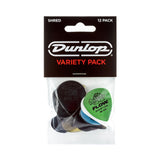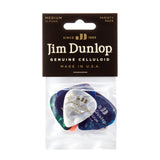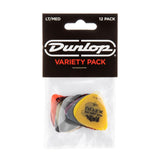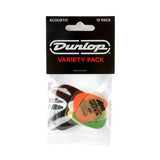Scale length is an important part of your guitar’s anatomy, but it’s something we’ve often found a lot of misunderstanding around. So to clear things up, this article will take you through the ins and outs of scale length, what it is, how to measure it, and why it’s such a fundamental part of the way your instrument plays.
What Is Scale Length?
To put it simply, scale length is the distance between your guitar nut and bridge. Depending on the manufacturer, this length will differ so there is no real 'standard' scale length for a guitar. That said, Fender guitars will tend to have a scale length of 25.5”, whereas Gibson guitars will usually have a shorter, 24.75” measurement. Guitar brands tend to stick to their scale length due to the way their instruments are made, unless they have a specific short scale or extended range guitar, more on which later.
How To Measure Scale Length
So how do we measure scale length? You’d think if it’s the distance between the nut and bridge, then we just measure that distance and we’re done, however it’s not quite that simple. Your guitar bridge will typically have different saddles, all with different string lengths to ensure correct intonation. So if you were to measure your scale length using this method, your results would differ depending on which string you measure at.

A more efficient way to measure your scale length is to go from the nut to the 12th fret, then simply double your result. If you measure the distance from the nut to the 12th fret on a typical LP style guitar, you will get a measurement of 12.375”, which when doubled gets you 24.75”, the standard scale length for a Gibson style guitar. Now you should note that it's not always the case that guitars measure exactly the same everytime, and this is due to small differences in the manufacturing process. For the most part however, these measurements will be there or thereabouts.

Guitar Scale Length Chart
Here you'll find a scale length chart for the majority of big guitar brand models, going from the shorter scale Fender Jaguar and Mustang right through to 8 string and baritone guitars.
.tg {border-collapse:collapse;border-spacing:0;margin:0px auto;} .tg td{border-color:black;border-style:solid;border-width:1px;font-family:Arial, sans-serif;font-size:14px; overflow:hidden;padding:10px 5px;word-break:normal;} .tg th{border-color:black;border-style:solid;border-width:1px;font-family:Arial, sans-serif;font-size:14px; font-weight:normal;overflow:hidden;padding:10px 5px;word-break:normal;} .tg .tg-x5q1{background-color:#ffffff;border-color:inherit;color:#000000;text-align:center;vertical-align:middle} .tg .tg-6emc{background-color:#ecf4ff;border-color:inherit;color:#000000;font-weight:bold;text-align:center;vertical-align:middle} .tg .tg-mq6t{background-color:#ffffff;border-color:inherit;color:#000000;text-align:left;vertical-align:middle} .tg .tg-94n5{background-color:#ecf4ff;border-color:inherit;color:#000000;text-align:left;vertical-align:middle} .tg .tg-hxmb{background-color:#ecf4ff;border-color:inherit;color:#000000;text-align:center;vertical-align:middle}
| Brand | Scale Length (in) | Scale Length (mm) |
|---|---|---|
| Fender Jaguar / Mustang / Duo Sonic |
24 | 610 |
| Gretsch | 24.6 | 625 |
| Gibson Les Paul / SG/ ES | 24.75 | 629 |
| PRS Custom 22/24 | 25 | 635 |
| Fender Strat / Tele / Jazzmaster |
25.5 | 648 |
| Schecter, Ibanez, ESP & Chapman (7 Strings) |
26.5 | 673 |
| Ibanez & ESP (8 Strings) |
27 | 686 |
| Gretsch Baritone | 29.75 | 756 |
Scale Length’s Effect On Playability
Now we understand what scale length is and how to measure it, it’s time to understand its affect on your guitar’s playability.
String Tension
String tension is a very personal thing. Some player’s prefer their strings to be harder to manipulate, because it allows you to dig in more with your picking hand and put more force into your fretting hand. Think SRV who strung his Stratocaster guitars with 12s. Others have a lighter touch, wanting bends and vibrato to come easier, so they go for a lighter gauge, like Yngwie Malmsteen, who utilises 8s to increase his picking and bending speed.
So how does this relate to scale length? Well a longer scale means increased tension, so if you string a Strat and an LP type guitar with 9s, the LP will have a lesser string tension due to its shorter scale. Put those same strings on a baritone guitar and the tension will ramp up hugely, making bending extremely difficult.

String Action
If you’ve read our Guitar Setup Guide, you’ll know all about string action but for the uninitiated, string action refers to the height between the strings and the fretboard. When we think of string action in relation to scale length, what we need to understand is that guitars with a longer scale length will increase the string tension, which in turn will require a higher action.
Let’s put it another way, if you put 9s on a shorter scale guitar, you will need to increase the string action to account for the lesser tension, resulting in a higher action than if you were to string it with 11s.
Fret Spacing
Fret spacing is another factor that is affected by scale length. You’ll notice if you were to switch from a Fender Jaguar to a Gretsch Baritone, the playing feel would be totally different due to the differing space between frets. As scale length increases, so to does fret spacing. Now for the most part guitarists won’t feel a massive difference, but if you have smaller hands, a short scale guitar will feel much more comfortable whereas a Baritone may feel slightly too difficult for those multi-fret stretches on some chords and scale runs.

Scale Length and String Gauge
As we mentioned previously, scale length is only one half of a picture. It’s the combination between scale length and string gauge where you find the sweet spot for your playing. There’s no reason you can’t end up with the exact same string tension on a 27” scale guitar as you can on a 24.75” scale guitar, you just have to pick the right gauge string. If you’re used to 11s on your Gibson, then you head out and buy a 7 string Ibanez, that same string gauge will feel way too tense. Try a set of 10s or 9s however, and you’ll find that the string tension evens out, resulting in a playing experience you’re more at home with.
To learn more about string gauge, check out our String Gauge Guide when you're done with this article.
Multi-scale Guitars
Multi-scale guitars, also known as fanned fret guitars, are becoming ever more popular, particularly with those guitarists who like to get low with heavier styles of music. You will find these on 6 strings, but they’re more common on 7, 8, and 9 string guitars, sometimes referred to as ‘extended range’ guitars.

Multi-scale guitars aim to provide players the best of both worlds, negating the need to change string gauge. The way it works is that each string on the guitar has a different scale length. On a multi-scale guitar, you’ll find the lower pitched strings have a longer scale length, going up to 28”. This length becomes shorter as you move to the higher pitched strings, getting more in the regular range of 25.5”. This means you get a higher tension on the low pitched strings and a lower tension on the higher pitched strings. Or to put it another way, higher tension for chugging riffs and chords, whilst retaining a slinky feel for bends and vibrato on the higher strings.
Conclusion
So there you have it, everything you ever wanted or needed to know on guitar scale length! We hope that this guide provides some illumination on this particular guitar topic, and we heartily recommend you follow up by reading our String Gauge Guide, which will offer further enlightenment for you knowledge hungry guitar geeks!
Learn More
Our String Gauge Guide goes hand in hand with this scale length guide.
Learn more about bridges with our all-encompassing Guitar Bridge Guide.
Another crucial guitar component, understanding your Guitar Nut, and it's massive effect on playability.


















